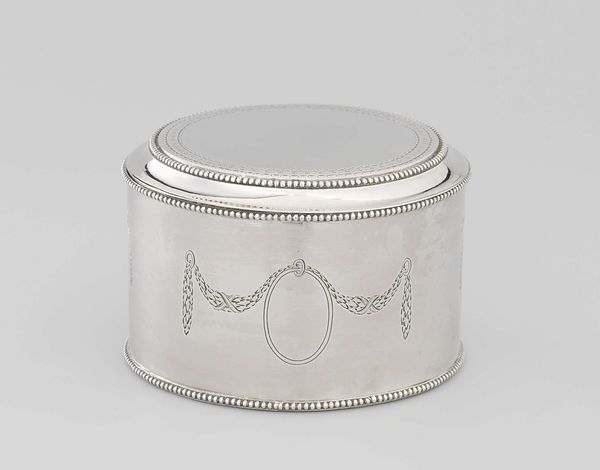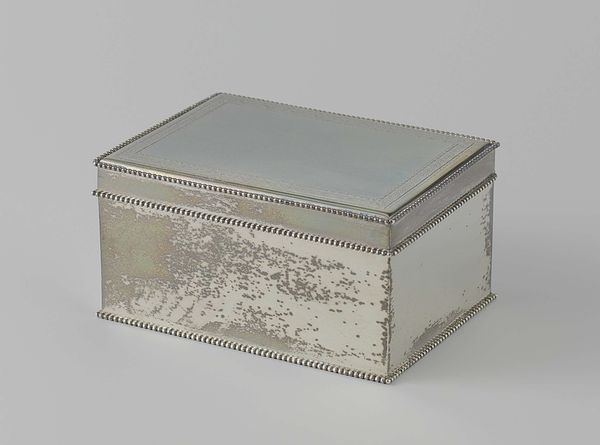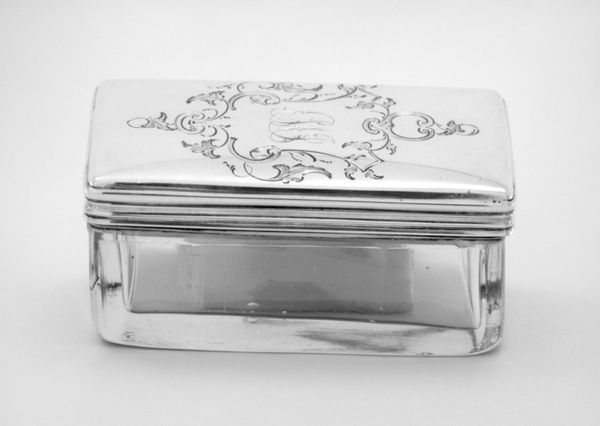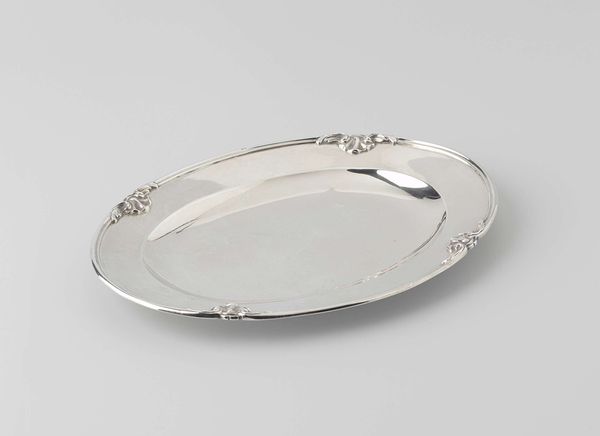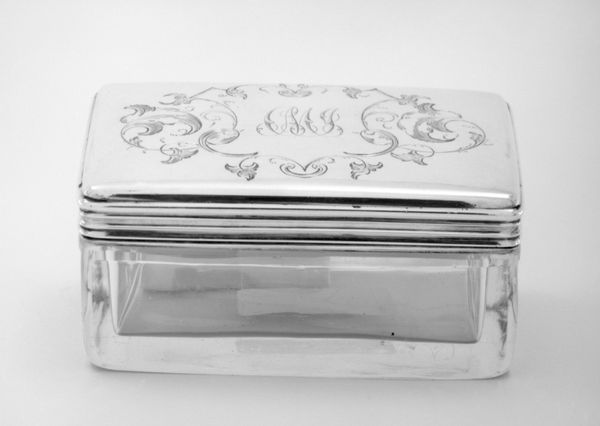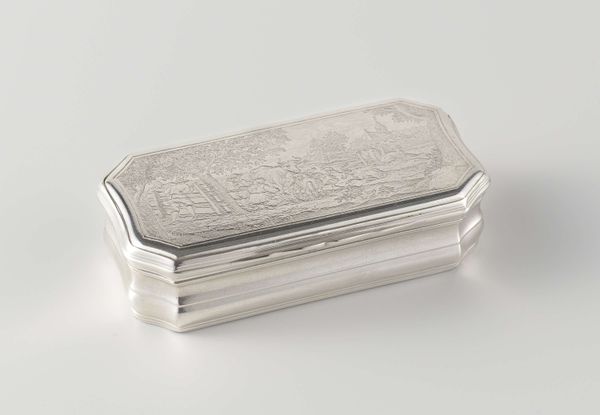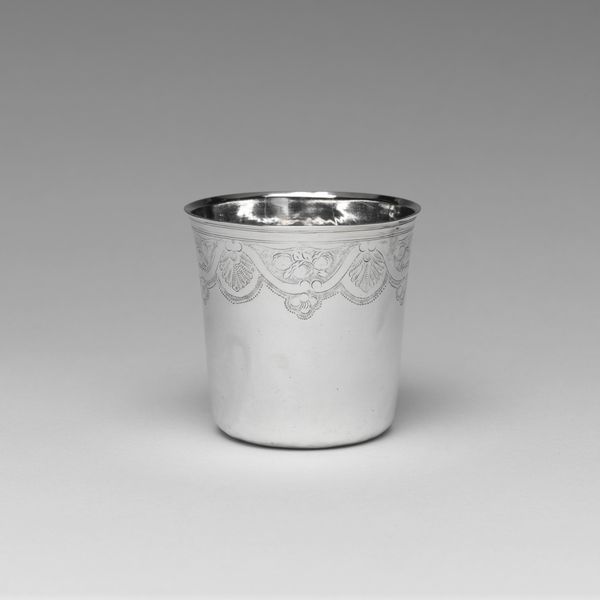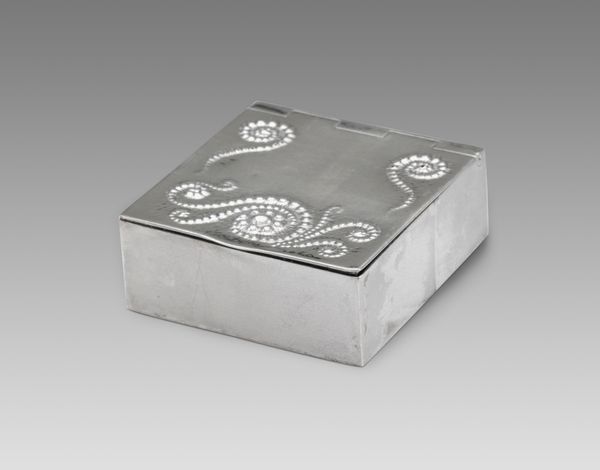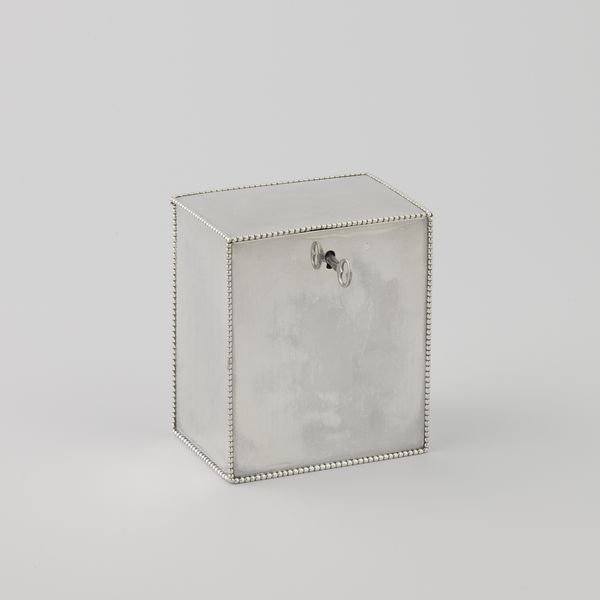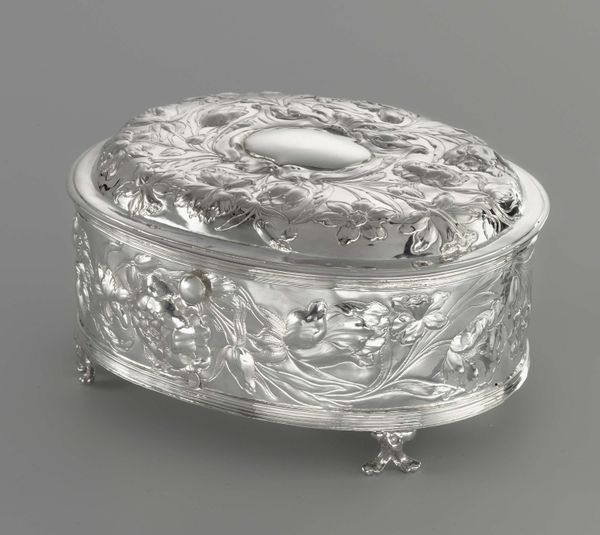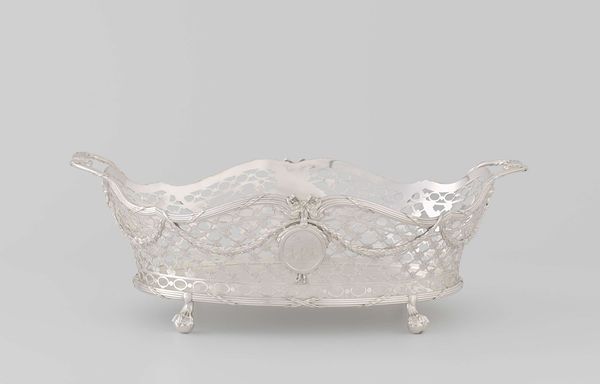
silver, metal
#
neoclacissism
#
silver
#
metal
#
decorative-art
Dimensions: height 8.6 cm, width 15.2 cm, depth 10.9 cm, weight 641 gr
Copyright: Rijks Museum: Open Domain
Curator: Standing here before this delicate metalwork, it is almost impossible not to notice its shimmering presence; however, it's much more complex than the aesthetic impressions. Editor: Immediately, I am reminded of cold winter mornings with frosted window panes reflecting a muted landscape; yet in terms of materials and labor, the boxes speak of an elegance of process beyond simple aesthetic appreciation, wouldn't you agree? Curator: Indeed. These "Two Boxes," dating from 1788, were crafted by Johannis Logerath during the height of Neoclassicism and exemplifies the refined decorative arts, but the simplicity in form hints at a life of more modest luxury. Its small scale evokes a time when even private spaces echoed the prevailing design principles of restraint, balance, and understated wealth. What does this imply for the artisan who invested time and labor in the item? Editor: Well, Logerath employed traditional techniques that involved considerable labor and skill, manipulating and shaping the silver metal to produce refined yet subtle surface textures and minimalist design. But it also raises broader considerations around materiality, skill and artistic values – and questions traditional notions of craftsmanship and utility versus high art. Were they purely functional or intended as symbols of wealth? What are your views? Curator: Personally, when I stare into its polished surfaces, the engravings stir an old-fashioned romance within me, with the daintiness reflecting a deeper search for harmony and refinement and, therefore, I wonder about Logerath. Was his spirit fulfilled while chiseling away for someone else’s fancy needs? Did the objects carry a soul of their own? Editor: It is important to avoid a sentimental bias. By emphasizing historical processes and societal functions of objects like this, we open to question broader themes beyond Logerath: the circulation of materials, commodity histories, colonial extraction… Curator: Agreed. Every angle presents a new frame through which we observe history and creation in subtle ways. Editor: So, yes! Examining these “Two Boxes” pushes us to delve into the complexities of artistic intention and reception, material culture, and our engagement with heritage – encouraging dialogue and different experiences along the way!
Comments
rijksmuseum about 2 years ago
⋮
Plain silver boxes were produced in large numbers in Amsterdam. The round box was meant to hold rusks, and the square one rolled wafers, so-called ‘oublies’. An inscription on the bottom of each box mentions that the two Stinsta sisters gave them in 1788 to their aunt and uncle, who had been their guardians for some years.
Join the conversation
Join millions of artists and users on Artera today and experience the ultimate creative platform.
